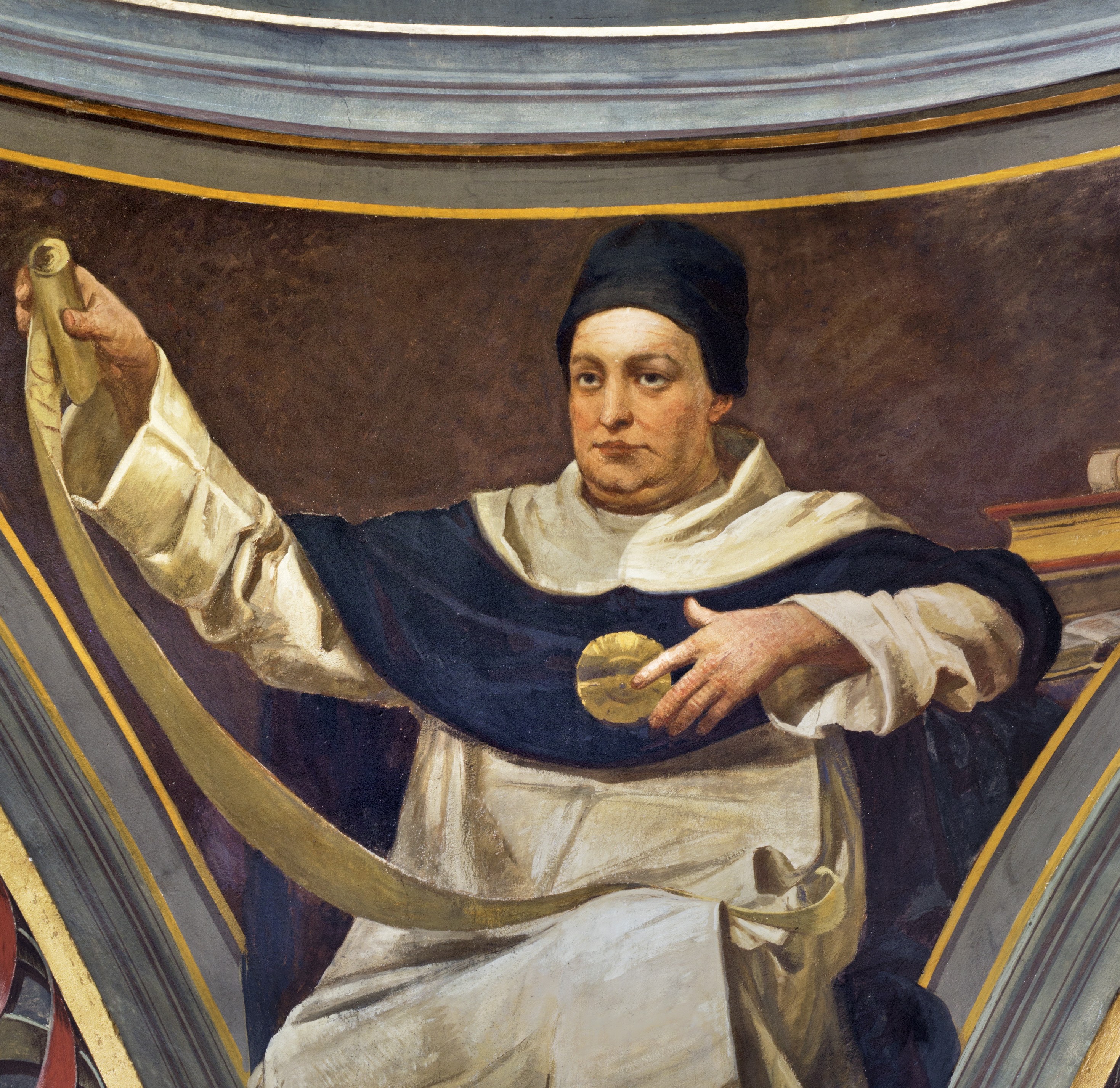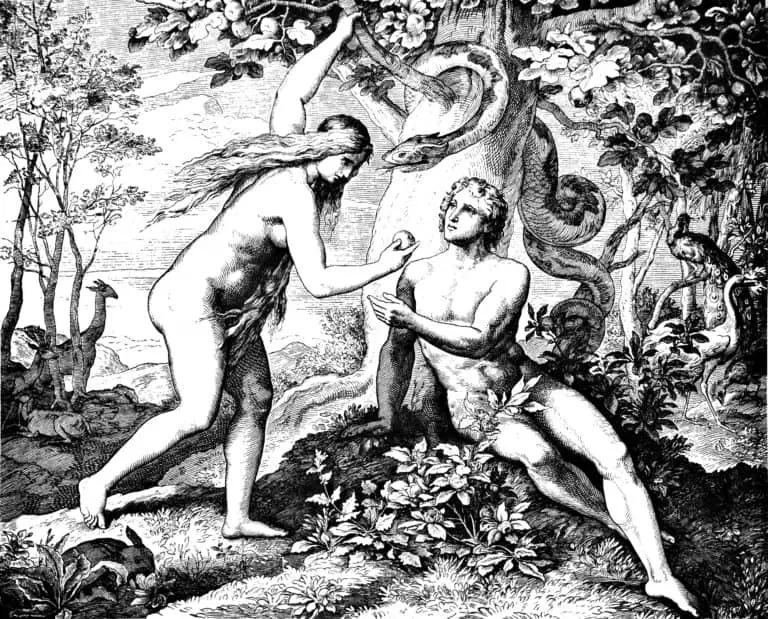What are the Five Proofs of God presented by St Thomas Aquinas?
The proof of God’s existence remains one of humanity’s most enduring philosophical questions. While countless thinkers have tackled this challenge throughout history, few have left as lasting an impact as St. Thomas Aquinas, also known as the Angelic Doctor.
His famous “Five Ways” stand as perhaps the most influential philosophical arguments for God’s existence. However, many modern readers misunderstand what Aquinas actually discovered and claimed. Rather than providing absolute proof, Aquinas developed a sophisticated framework of logical demonstrations that continue to spark debate among philosophers, scientists, and theologians today.

This article examines Aquinas’s arguments, explains their true meaning, and explores their relevance in our modern world. We’ll uncover what these demonstrations really tell us about God’s existence and why they remain significant centuries after their formulation.
Understanding Aquinas’s Historical Context
In the bustling intellectual landscape of 13th century Europe, Thomas Aquinas emerged as a pivotal figure who would forever change how we think about proving God’s existence. The medieval period witnessed an unprecedented fusion of faith and reason, particularly within the newly established universities.
13th Century Philosophy and Religion
First thing to remember, medieval education was built upon the foundation of seven liberal arts:
- Grammar, logic, and rhetoric (the trivium)
- Arithmetic, geometry, music, and astronomy (the quadrivium)
These universities, numbering twenty-three by 1300, became centers of intellectual discourse where gifted scholars from across the world gathered to pursue knowledge. The Dominican order, which Aquinas joined, played an essential role in propagating and defending Christian doctrine through these educational institutions.
Influence of Aristotelian Thought
The 13th century marked a decisive turning point with the rediscovery of Aristotle’s complete works. Furthermore, these texts arrived in Latin translations from both Greek and Arabic sources, introducing medieval scholars to comprehensive systems of physics, metaphysics, and ethics.
Albert the Great, Aquinas’s mentor, undertook the remarkable task of presenting Aristotle’s complete works to Latin scholars, despite ecclesiastical prohibitions.
Consequently, Aquinas’s exposure to Aristotelian thought began during his studies at Naples and deepened under Albert’s guidance in Cologne.
The Role of Reason in Medieval Faith
In essence, Aquinas developed a sophisticated approach to understanding divine truths. He established that natural human reason could discover certain truths about God independently, as exemplified by pagan philosophers like Aristotle. Nevertheless, he maintained that sacred teaching contained the most comprehensive account of God’s nature.
Aquinas’s revolutionary contribution lay in demonstrating the natural harmony between Christian faith and reason. During a period when many feared that Aristotle’s pagan thought contradicted Christian faith, Aquinas proved that what appeared to be incompatible with faith was not truly reason, and what seemed to oppose rationality was not genuine faith.
What are The Five Ways Explained Simply?
Aquinas developed his famous proofs for God’s existence through careful observation of the natural world. His arguments, known as the Five Ways, represent a systematic approach to understanding divine reality through reason alone.
1) Motion and Change in the Universe
The first and most straightforward proof begins with a simple observation: things in our universe are constantly changing. Aquinas noted that anything undergoing change must be changed by something else, since nothing can be both potential and actual in the same way simultaneously. Indeed, just as wood cannot shape itself into a table without a carpenter’s work, all change requires an external agent.
2) Causes and Effects in Nature
The second demonstration examines the relationship between causes and effects in nature. Accordingly, Aquinas observed that nothing can be the cause of its own existence. Above all, he recognized that:
- Every effect must have a cause
- Each cause is itself caused by something else
- This chain of causation cannot continue infinitely
As a result, there must be a first cause that initiates all other causes without itself requiring a cause.
3) The Necessity of Existence
The third way presents perhaps Aquinas’s most profound insight into existence itself. He begins by noting that everything we observe in nature is “possible to be and not to be” – meaning things come into existence and pass away. In other words, nothing we see around us exists necessarily; each thing could potentially not exist.
Besides, if everything were merely possible (capable of not existing), then at some point nothing would have existed at all. Therefore, since things clearly do exist now, there must be at least one being whose existence is necessary – a being that cannot not exist.
This necessary being, Aquinas argues, serves as the foundation for all contingent existence. Similarly to how a house requires a foundation to stand, all possible beings require a necessary being as their ultimate ground of existence.
4) Argument from Gradation
There are different degrees of goodness in different things. Following the “Great Chain of Being,” which states there is a gradual increase in complexity, created objects move from unformed inorganic matter to biologically complex organisms. Therefore, there must be a being of the highest form of good. This perfect being is God.
5) Argument from Design
All things have an order or arrangement that leads them to a particular goal. Because the order of the universe cannot be the result of chance, design and purpose must be at work. This implies divine intelligence on the part of the designer. This is God.
Undeniably, Aquinas himself stated,
“By faith alone do we hold, and by no demonstration can it be proved, that the world did not always exist”.
His arguments were deductive rather than scientific, proceeding from observed premises to logical conclusions.
What did St Thomas Aquinas Actually Claim?
Altogether, Aquinas’s demonstrations were part of a larger systematic argument for the truth of Christian faith. Generally, his work aimed to show that natural reason could demonstrate certain truths about God independently. The arguments conclude with something of “pure actuality” – an entity without potential for change.
Soon after establishing these basic proofs, Aquinas spent much of the first part of the Summa Theologica arguing why this purely actual being must possess certain attributes.
Certainly, his goal was not to prove every truth about God that Christians believe. Otherwise stated, the demonstrations were intended only to prove the existence of the God of classical monotheism, or the infinite, eternal act of being itself.
Under the influence of St. Albert the Great, Aquinas appreciated scientific study as an enterprise of observation, discovery, and contemplation. He saw harmony between science and faith, believing that truth unites both domains. This perspective suggests that for both believers and scientists, what connects them is a shared passion for discovering truth.
What relevance does St Thomas’ Argument have today?
Even in our technologically advanced era, Aquinas’s philosophical framework continues to offer valuable insights into the relationship between faith and reason. His systematic approach to understanding reality remains remarkably relevant to contemporary discussions about the nature of existence and causation.
Notably, modern physics has not invalidated Aquinas’s core insights about causation and existence. His concept of God as the primary cause aligns with scientific understanding in an unexpected way – the laws of nature themselves require an explanation for their existence and operation. Subsequently, quantum mechanics and relativity theory have only deepened questions about the ultimate nature of reality and causation.
The relationship between mind and matter remains a central philosophical challenge. Aquinas’s understanding of the soul as the form of the body offers a sophisticated framework for addressing questions of consciousness and physical existence. His perspective suggests that:
- The mind and body function as an integrated whole
- Mental activities require physical processes
- Consciousness emerges from this unity without being reduced to it
What are Modern Theological Perspectives?
Presently, Aquinas’s thought serves as a crucial bridge between faith and modern scientific inquiry. His framework demonstrates that:
- Scientific truth and religious truth share a common source
- Natural science operates within moral boundaries
- Understanding requires both empirical observation and philosophical reflection
Evidently, Aquinas’s approach remains valuable for addressing contemporary challenges in theology and science. His insights about the relationship between faith and reason continue to inspire modern thinkers. Primarily, his work shows how scientific discoveries can deepen rather than diminish our understanding of ultimate reality.
Correspondingly, Pope John Paul II affirmed the enduring importance of Aquinas’s thought for the Church’s dialog with the modern world. This recognition underscores how Aquinas’s philosophical framework provides tools for engaging with contemporary scientific discoveries while maintaining theological integrity.
Ultimately, what makes Aquinas’s arguments particularly relevant today is their focus on the fundamental intelligibility of the universe. His observation that the comprehensibility of nature itself requires explanation resonates with modern scientific thinking, as exemplified by Einstein’s famous remark:
“The most incomprehensible thing about the world is that it is comprehensible”
Whare are some Modern Criticisms?
Notable critics have challenged Aquinas’s demonstrations of God’s existence, primarily focusing on their logical structure and modern scientific understanding. Richard Dawkins, among others, has raised significant objections to these classical arguments.
1) Scientific Objections
Modern scientific criticism often stems from misunderstanding what Aquinas actually claimed. Notably, Dawkins interprets the First Way as suggesting “nothing moves without a prior mover”. In reality, Aquinas never made such a blanket statement. Additionally, critics often incorrectly assume Aquinas tried to prove the universe had a temporal beginning.
The Big Bang theory frequently appears in these debates. Although some suggest it eliminates the need for a divine cause, this interpretation misses Aquinas’s point about:
- The nature of change itself
- The relationship between potentiality and actuality
- The necessity of concurrent causation
2) Philosophical Challenges
Philosophical objections to Aquinas’s arguments typically center on three main points:
- The concept of necessary being
- The nature of causation
- The possibility of infinite regress
Kant argued that reasoning from the phenomenal world (what we experience) to the noumenal world (reality itself) exceeds our cognitive abilities. Meanwhile, Hume questioned whether we could necessarily reason from observed effects to inferred causes.
3) Theological Debates
Within theological circles, the debate focuses less on whether Aquinas’s arguments work as formal proofs and more on their role in faith formation. Primarily, modern theologians emphasize that Aquinas himself saw these demonstrations as ways to understand what we believe through reason.
The relationship between faith and reason remains central to these discussions.
Notably, Aquinas never claimed his arguments could prove every aspect of Christian doctrine. On the contrary, he maintained that certain divine truths, such as the Trinity, could only be known through revelation.
Contemporary defenders of Aquinas point out that many criticisms result from misreading his actual claims. For instance, when Dawkins dismisses the Fifth Way by referencing evolution’s ability to explain apparent design, he misses Aquinas’s deeper point about the regularity of natural laws themselves.
Edward Feser and other modern Thomistic philosophers emphasize that most contemporary critiques fail to engage with what Aquinas actually wrote.
Fundamentally, they argue that understanding Aquinas requires grasping his metaphysical framework rather than trying to fit his arguments into modern scientific categories.
Conclusion
Aquinas’s demonstrations for God’s existence stand as remarkable achievements. These arguments offer a sophisticated framework for understanding the relationship between faith and reason.
Modern debates about Aquinas’s work highlight an essential truth: his arguments remain relevant because they address fundamental questions about existence, causation, and ultimate reality. Though critics challenge his conclusions, many objections stem from misunderstanding his actual claims rather than engaging with his core philosophical insights.
Certainly, Aquinas never intended his Five Ways to serve as standalone proofs or scientific explanations. His demonstrations instead reveal how careful reasoning can illuminate theological truths while respecting both faith and scientific inquiry. This balanced approach explains why his work continues to spark meaningful dialog between philosophers, scientists, and theologians.
Aquinas’s lasting legacy teaches us that faith and reason need not conflict. His systematic framework shows how rational investigation can deepen religious understanding while maintaining intellectual rigor. Though centuries have passed since their formulation, his arguments still offer valuable insights for anyone seeking to understand the fundamental nature of reality and existence.






